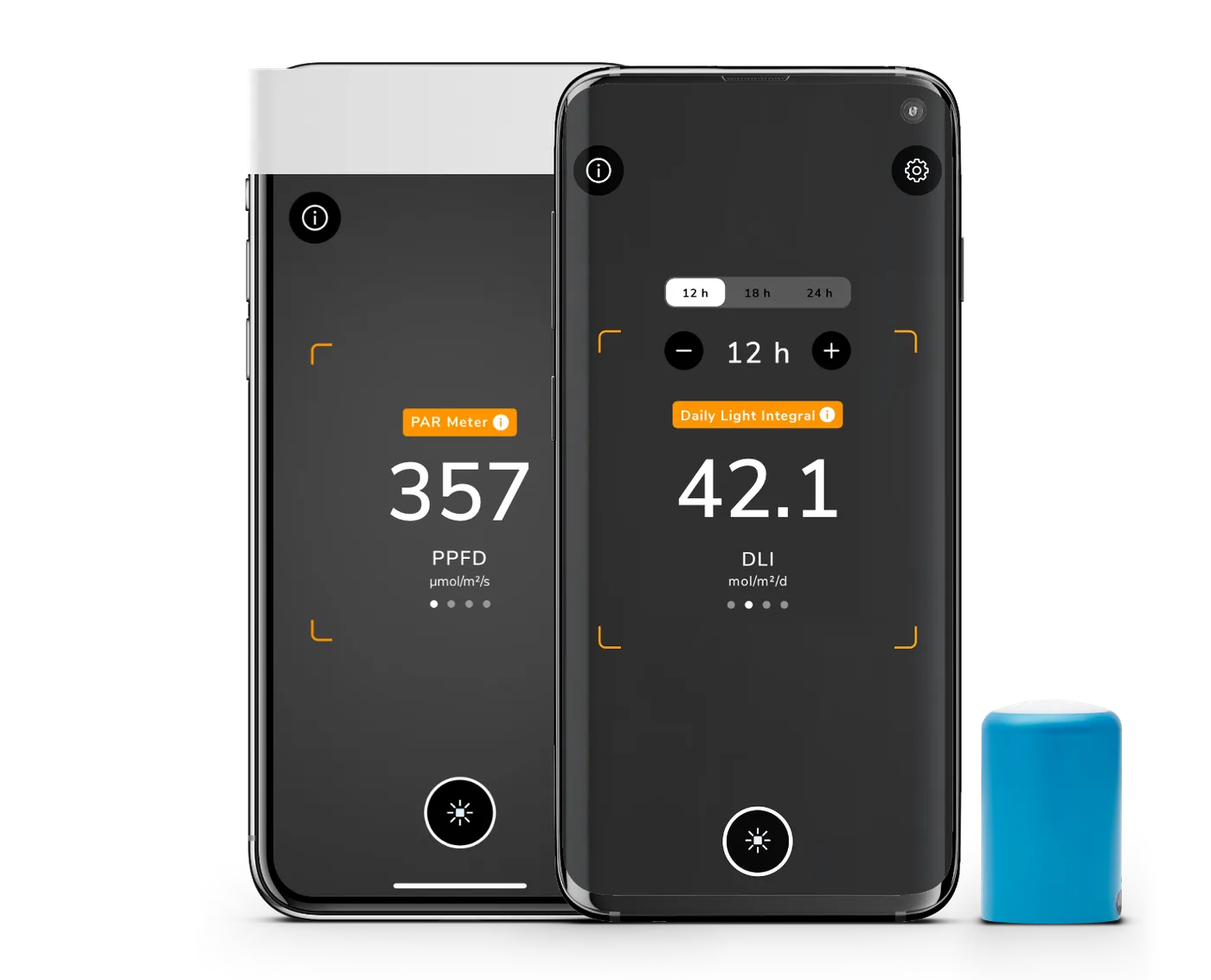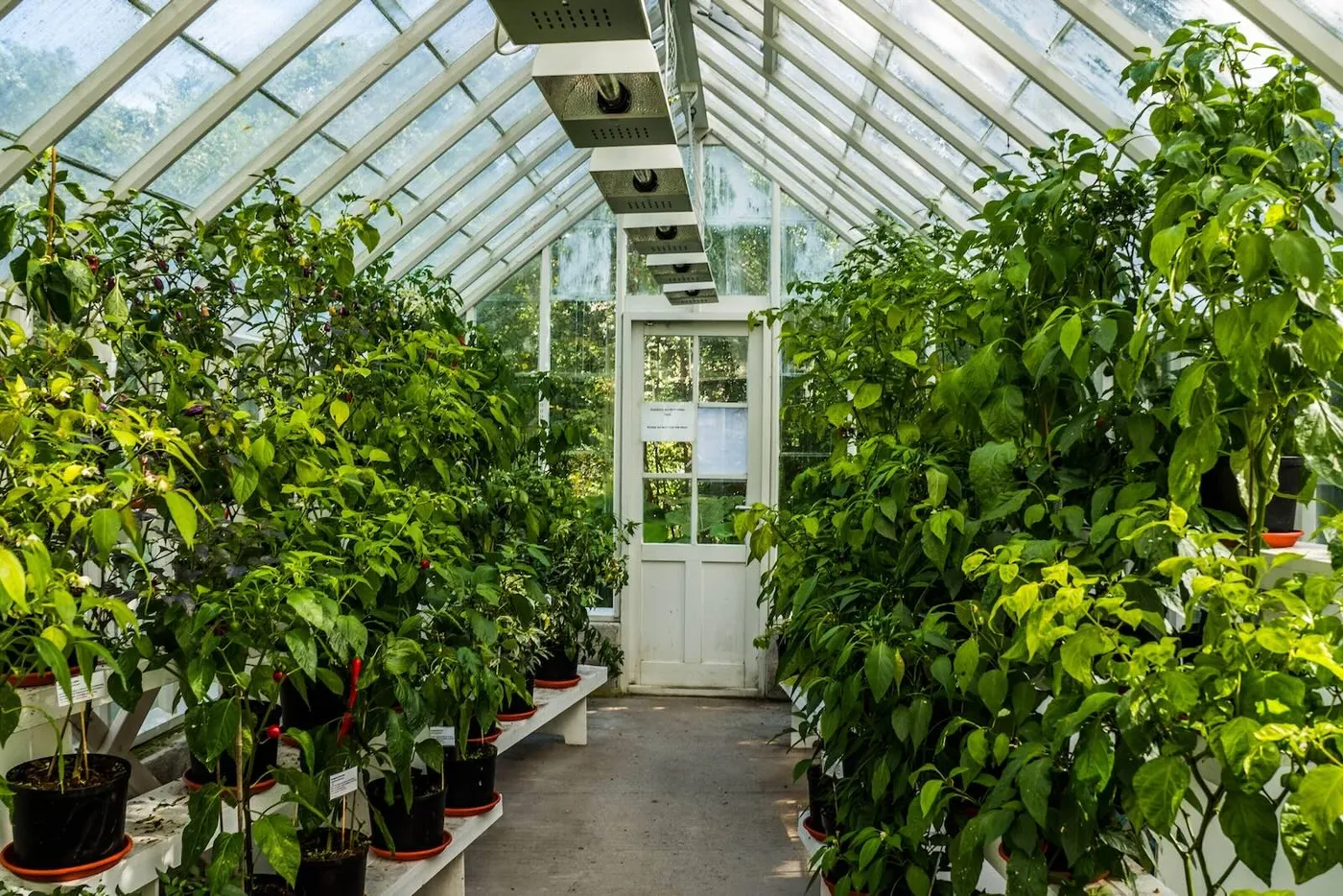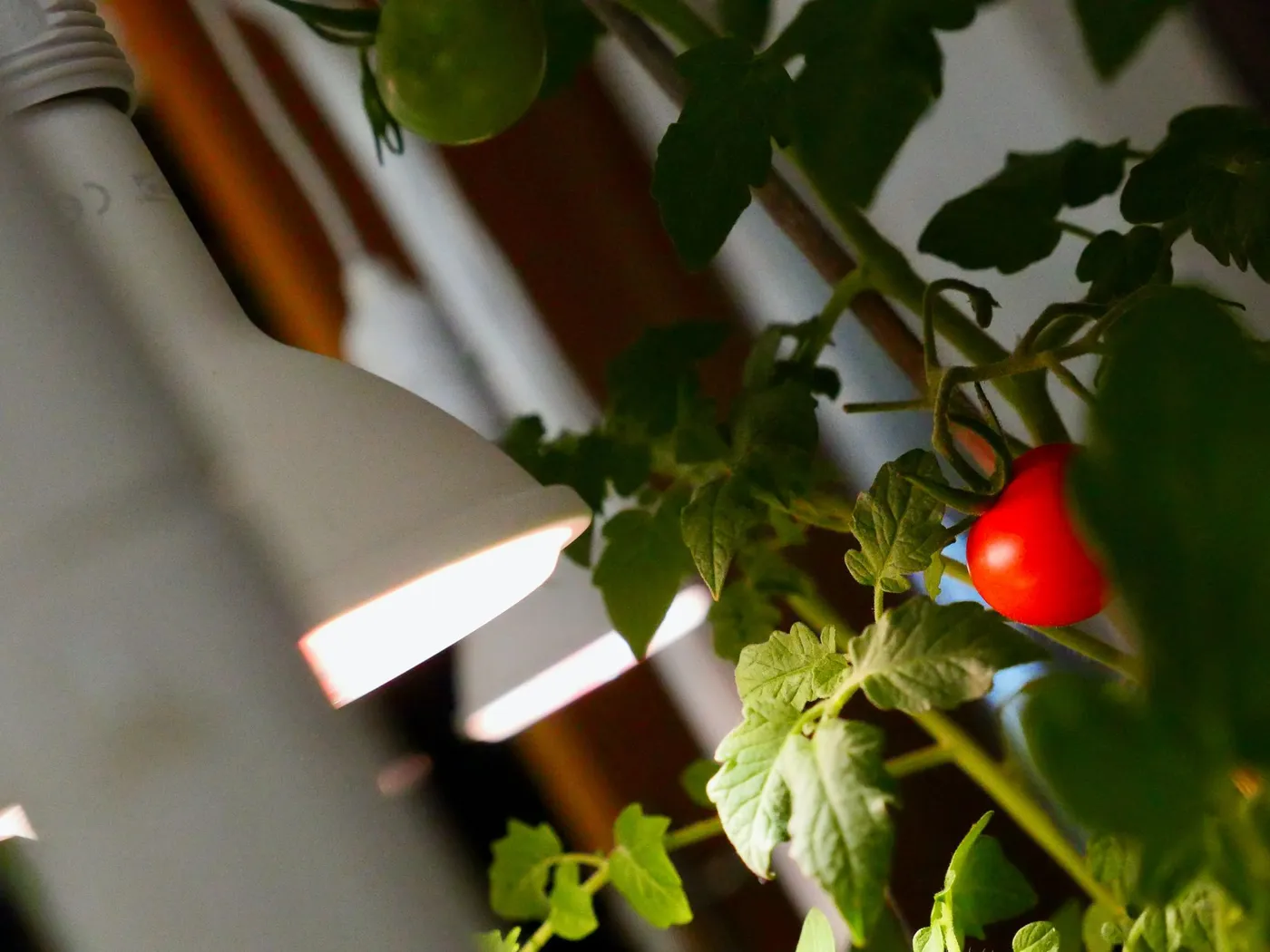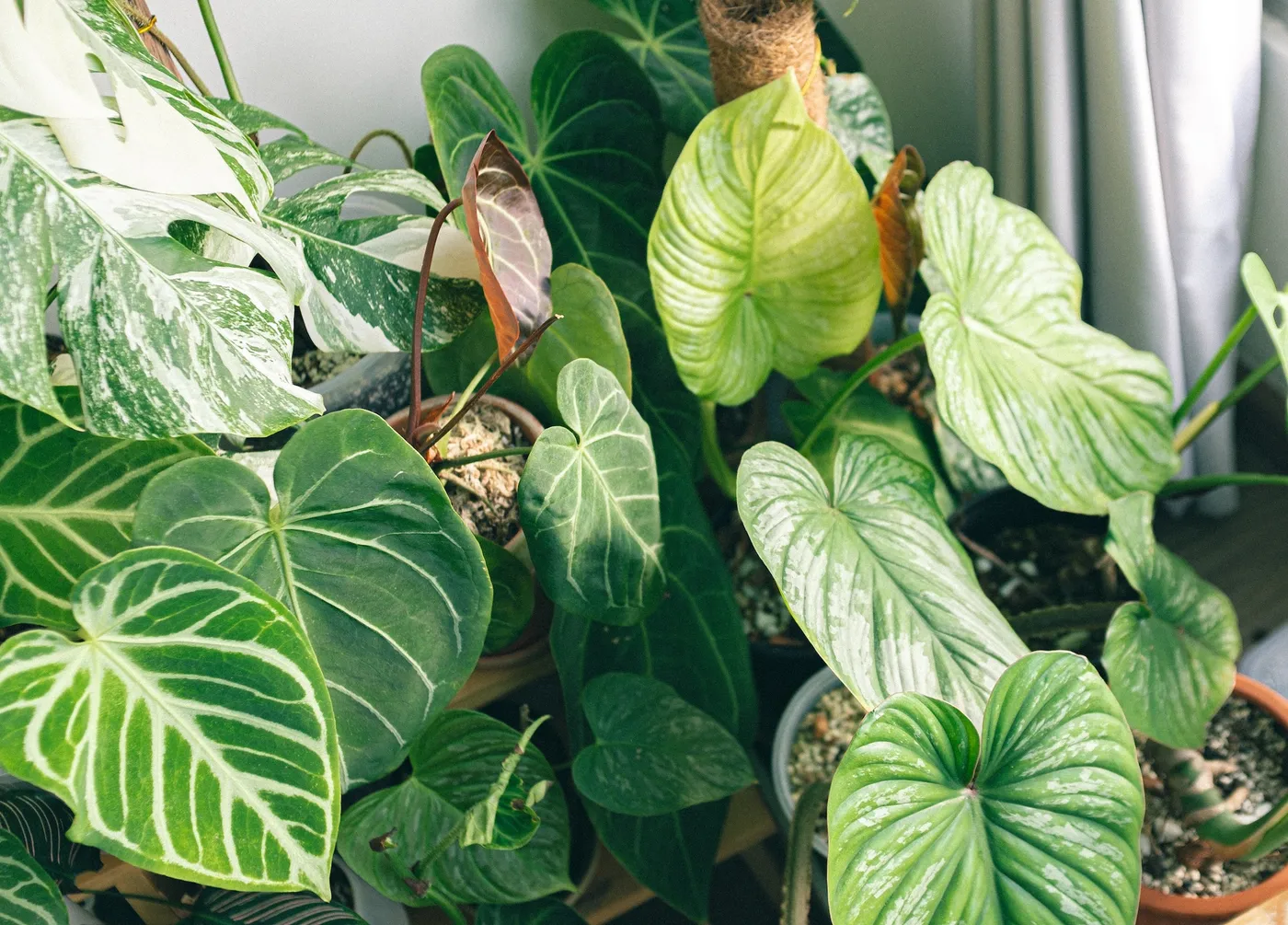
Auto-Translate
If there's one question that never allows a cannabis grower any sleep, it's — are my plants getting enough light?
If this question has ever crossed your mind, don't worry, you're not alone. Considering every professional-grade marijuana grow facility is decked out in ultra-powerful lighting, it's no mystery why many home growers find their lighting solution inadequate.
Luckily for you, your cannabis crop’s health in regards to lighting is well understood and relies on parameters known as photosynthetically active radiation (PAR) measured as PPFD and the daily light integral or DLI for short. There are many resources on growing cannabis, but when it comes to autoflowering cannabis strains, the information you can find on the internet might be a bit thin or misleading. Therefore, we've written this article for all you autoflower growers out there.
Contents
Read along as we describe recommended PAR/PPFD and DLI values for autoflowering cannabis.
Cannabis Lighting Basics
Let us quickly cover the cannabis lighting basics: PAR, PPFD, and DLI. You can skip this section if you're already familiar with these terms. You may also consider our in-depth article on Lux vs. PPFD or the daily light integral.
Photosynthetically Active Radiation (PAR)
Photosynthesis (i.e. what makes your cannabis plants grow) takes place in special cells which get excited by a certain wavelength or color of light. Light as it is perceived by plants is referred to as photosynthetically active radiation (PAR) and it contains all the light with wavelengths between 400 and 700 nanometers. For the vast majority of green plants, photosynthesis is mostly taking place in the red (600-700 nm) and blue (450-500 nm) part of the spectrum. This is the reason why some LED grow lights provide mostly red and blue light instead of “full spectrum” white light, to reduce the electricity consumption for seemingly unnecessary light.
Photosynthetic Photon Flux Density (PPFD)
The amount of PAR reaching a surface, e.g. the plant's leaves, is measured in PPFD, which stands for photosynthetic photon flux density. PPFD measures all photons (light particles) within the PAR spectrum in micromoles per square meter per second (μmol/m²/s). This means that PPFD specifically measures the light available to plants for photosynthesis and thus, impacts their growth.
Daily Light Integral (DLI)
The daily light integral (DLI) is the total sum of photosynthetic lighting intensity measured as PPFD over a 24 hour period. In short, the DLI is a measure of usable light your plant receives over a day. Ultimately, supplying adequate light intensity and duration (i.e. the DLI) is the single most important factor when it comes to plant lighting. Luckily, the effects of DLI on plants is well researched for many plants and we can harness this knowledge to cultivate cannabis better and cheaper.
You've probably already encountered more than these three terms. You can find all the relevant terms around plant lighting, grow lights, and light measurement in our summary if you're interested.
How Much Light Do Autoflower Cannabis Plants Require?
Autoflowering marijuana plants thrive just as much with a lot of light as regular (feminized) plants do. As the photoperiod (i.e. how long the lights are kept on) does not change from the vegetative to the flowering phase, the lights can genereally be kept on similar levels as when growing feminized cannabis plants in their vegetative stage for the whole autoflowering phase.
PAR / PPFD Levels for Autoflowers
Compared to feminized cannabis plants, many growers give somewhat lower PPFD levels to autos. This is since cannabis autos such as Bruce Banner Autoflowers require (usually) 20 hours of daily light, which is much more than the 18 or 12 hours required by feminized strains. If prolonged photoperiods are combined with strong, contemporary LED grow lights, the DLI for autoflowers can become extremely high. As a result, many autoflower growers employing 20 hours of daily light may strive for PPFD levels around or below 700 µmol/m²/s during the peak bloom phase. When blooming feminized cannabis, they may utilize PPFD values closer to or upwards of 1000 µmol/m²/s.
| Strain Type | Photoperiod (h) | PAR Level (PPFD) |
|---|---|---|
| Autoflower | 18 – 20 | 500 – 700 |
| Feminized | 12 – 18 | 500 – 1050 |
However, if the plants are prospering, a more experienced autoflower gardener may feel safe increasing PPFD levels up to 1000 µmol/m²/s at the end of bloom – especially in addition to increased CO2 levels. Also, it is safer to do so in a case-by-case situation when the producer can utilize their experience to judge how that specific strain is coping with high PPFD levels under that particular circumstances.
DLI Levels for Autoflowers
Handling the daily light integral (DLI) for autoflowers properly might be confusing at first as DLI levels are generally reduced at the initiation of the flowering/bloom phase for feminized cannabis plants. However, as autos don't require a reduction in photoperiod (e.g. switching from a 18 hour schedule to a 12 hour schedule) to produce flowers, the DLI can be kept just as high as during the vegetative phase.
| Strain Type | Veg. DLI | Bloom DLI |
|---|---|---|
| Autoflower | 30 – 45 | 30 – 45 |
| Feminized | 30 – 45 | 25 – 40 |
As the DLI is the main measure you want to optimize for, you'll ideally track and adjust your cannabis plants' DLI each week from seed to harvest as shown in the following chart:
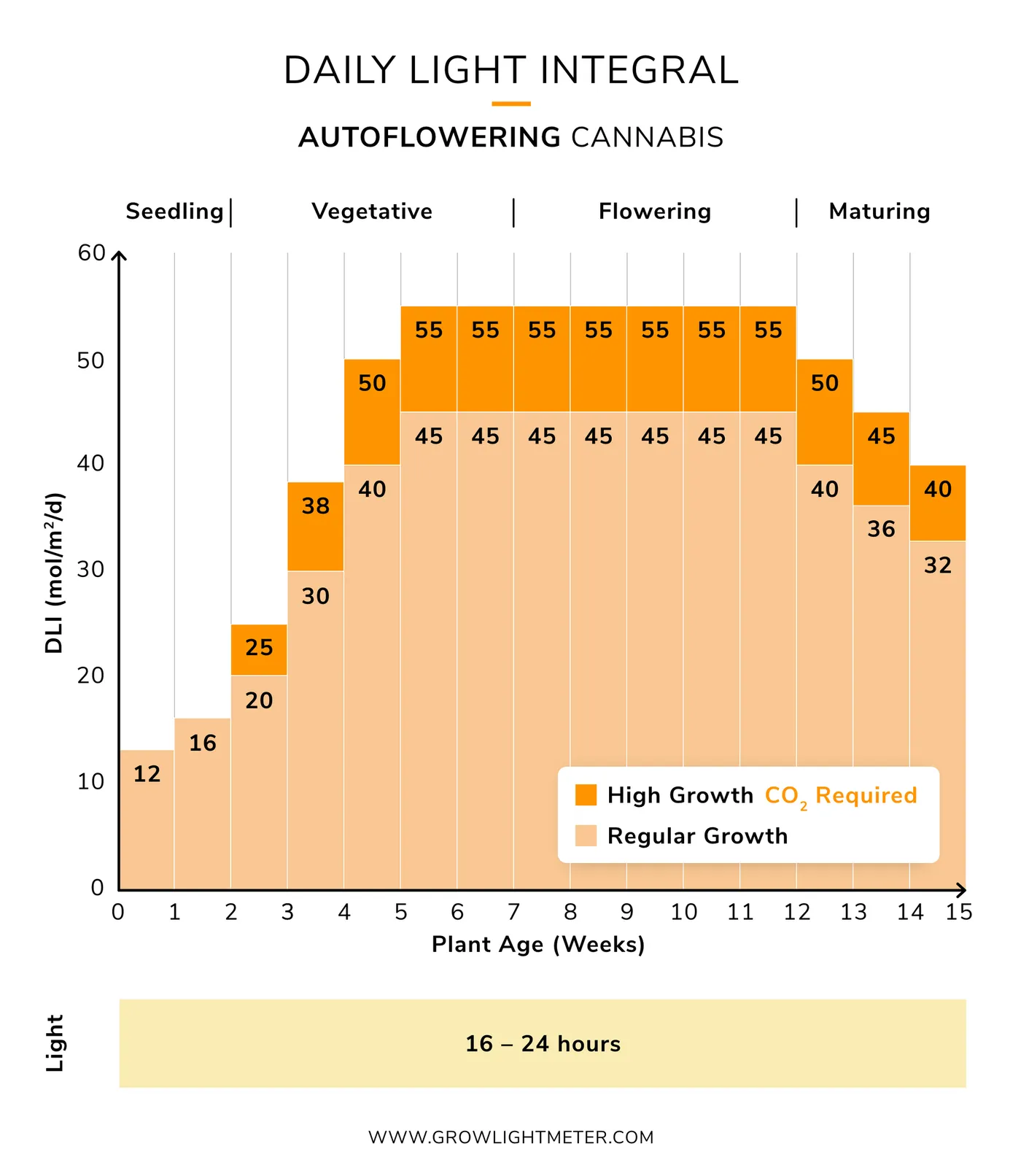
Measuring PPFD and DLI
If you're like us — you want to optimize the light levels for your cannabis plants for the best results in both plant growth and electricity consumption.
However, as you probably know, they are expensive. But there is an easier, cost-effective, and readily available solution: The Photone PAR/PPFD and DLI meter app.
This article was written in collaboration with Premium Cultivars.
Premium Cultivars is an American seed bank supplying seeds to America and Europe focused on delivering the highest quality cannabis seeds on the market. Premium Cultivars also aims to offer these amazing seeds for the most affordable prices, as everyone should have access to the best weed seeds to grow in their home. Growing cannabis from seeds is not only cost-effective but it is also an extremely rewarding pursuit – check them out if that sounds interesting to you!
Using our coupon photone20 will even give you a 20% discount at checkout 😉

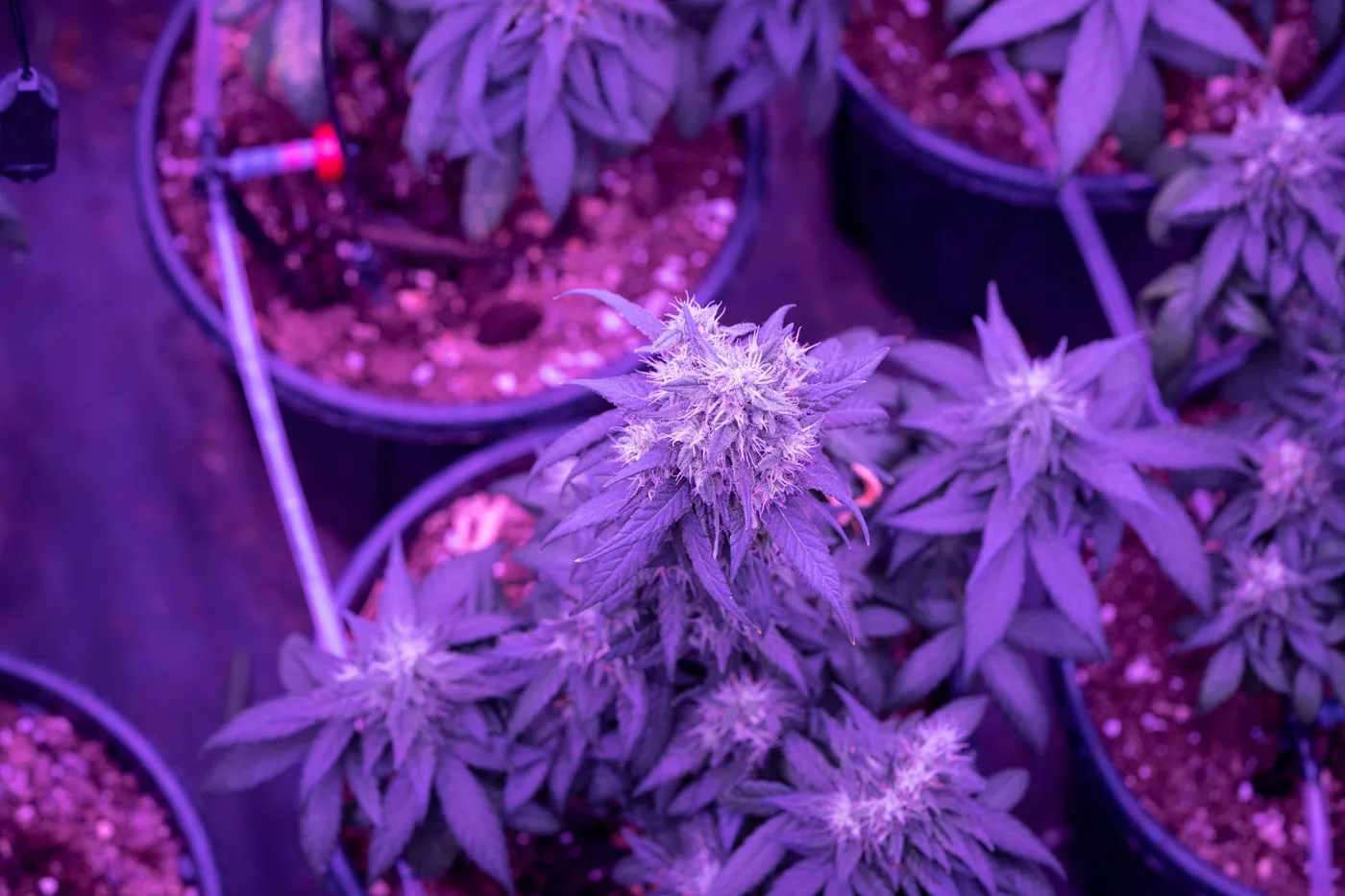
 Share This
Share This



